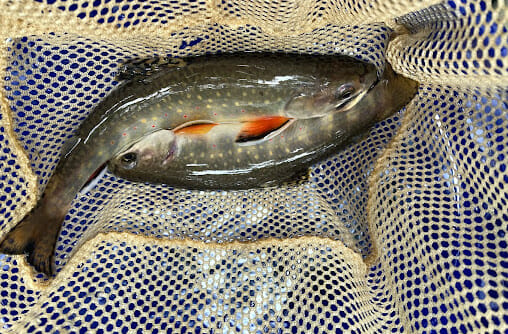Several dozen wild brook trout are enjoying new home waters in Tennessee.
Trout Unlimited and partners recently completed a project to move the brookies into a stretch of the Trail Fork of Big Creek in the Cherokee National Forest.
A concurrent project that replaced a fish-blocking undersized culvert on the stream means those trout will have access to more and better habitat, too.
The stretch of stream into which the brookies were moved previously supported rainbow trout, which were wild but not native to the stream.
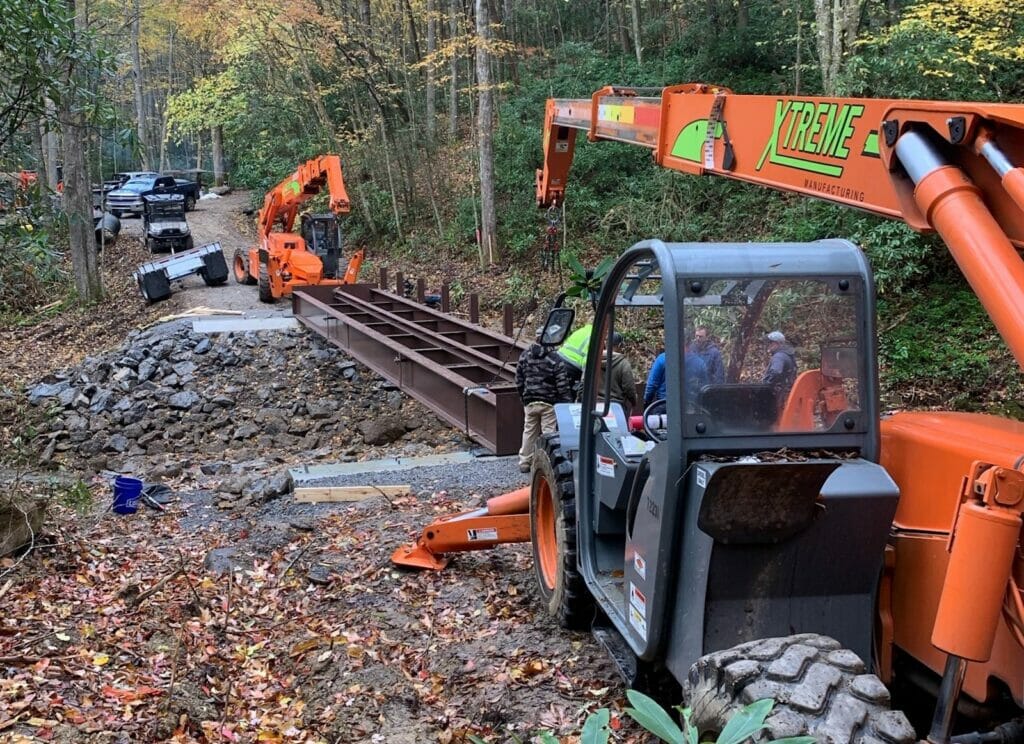
“It’s the same story that we have seen many places across the Southeast,” said Jeff Wright, TU’s staff lead on the project. “The stream once supported wild brook trout but they were likely extirpated during heavy logging. When the stream was once again able to support trout, non-native rainbows were stocked instead of restoring the wild brook trout.”
Because the stream features a natural waterfall, Trail Fork was identified as an ideal location to restore wild brook trout because wild rainbows that still exist below the waterfall will not be able to move upstream.
Over the span of a few years, officials with the Tennessee Wildlife Resources Agency, Cherokee National Forest and students from the University of Tennessee used electrofishing gear to remove all of the rainbows from above the falls.
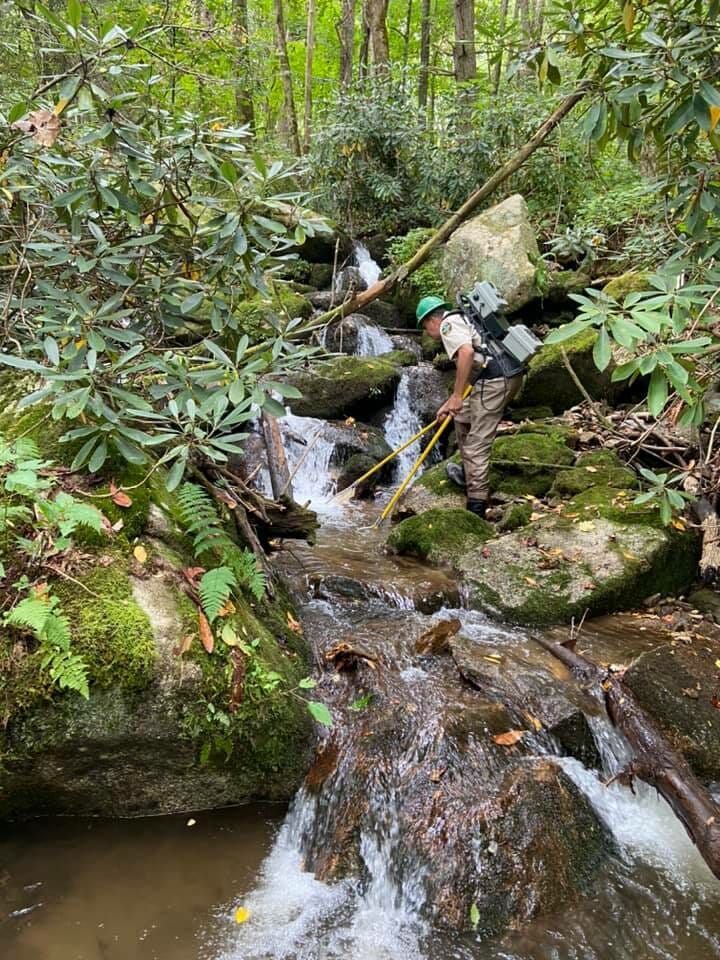
With the stream trout-free, about two dozen brook trout were moved from a nearby creek to Trail Fork early this fall.
The transferred fish included a mix of adult and juvenile brookies and took place in time for the fish to spawn in their new stream.
The culvert replacement will ensure that the fish can move freely throughout the full stretch, which totals about a mile of water.
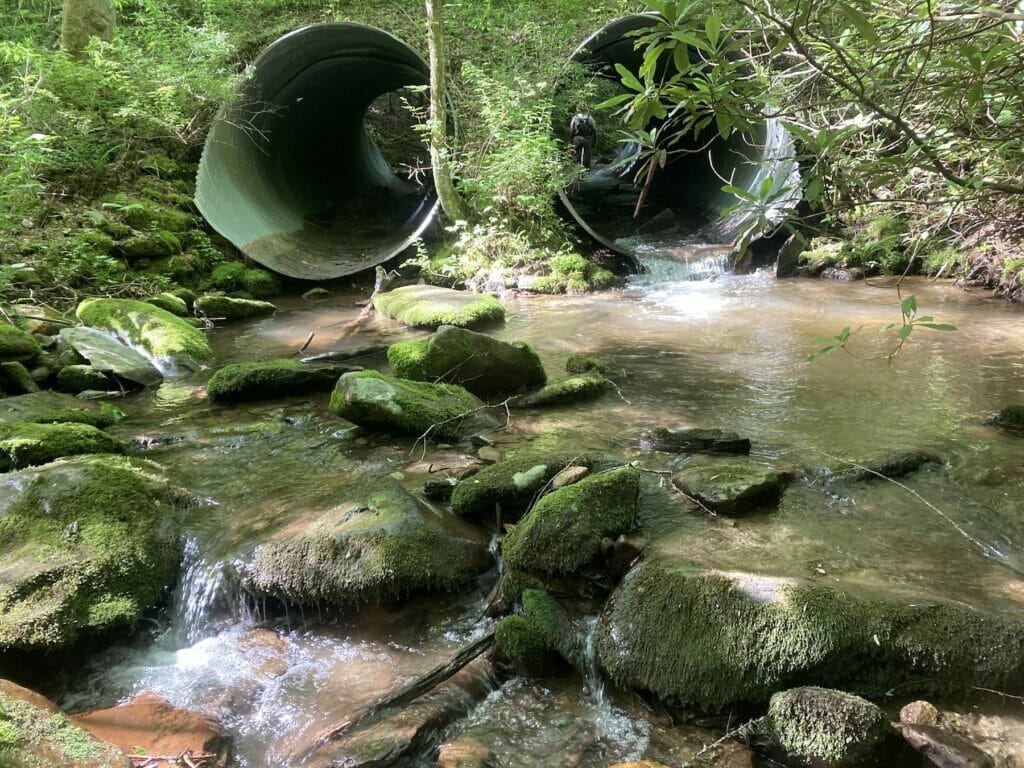
Wright said the existing culvert featured two relatively large pipes. Despite the size, it still wasn’t enough to properly handle heavy flows, which resulted in the lower ends of the culverts becoming perched, essentially creating an artificial waterfall.
“Even though the culverts were relatively large, they still weren’t suited for the hydrology of the stream,” Wright noted.
Because the culverts created a barrier, instream habitat was better above than below the culvert in part because wood that fell naturally into the stream couldn’t disperse downstream.
The culvert pipes were also degrading, posing a risk of eventual failure. The risk to the downstream community of Del Rio was relatively minor, but a failure would still have been notable.
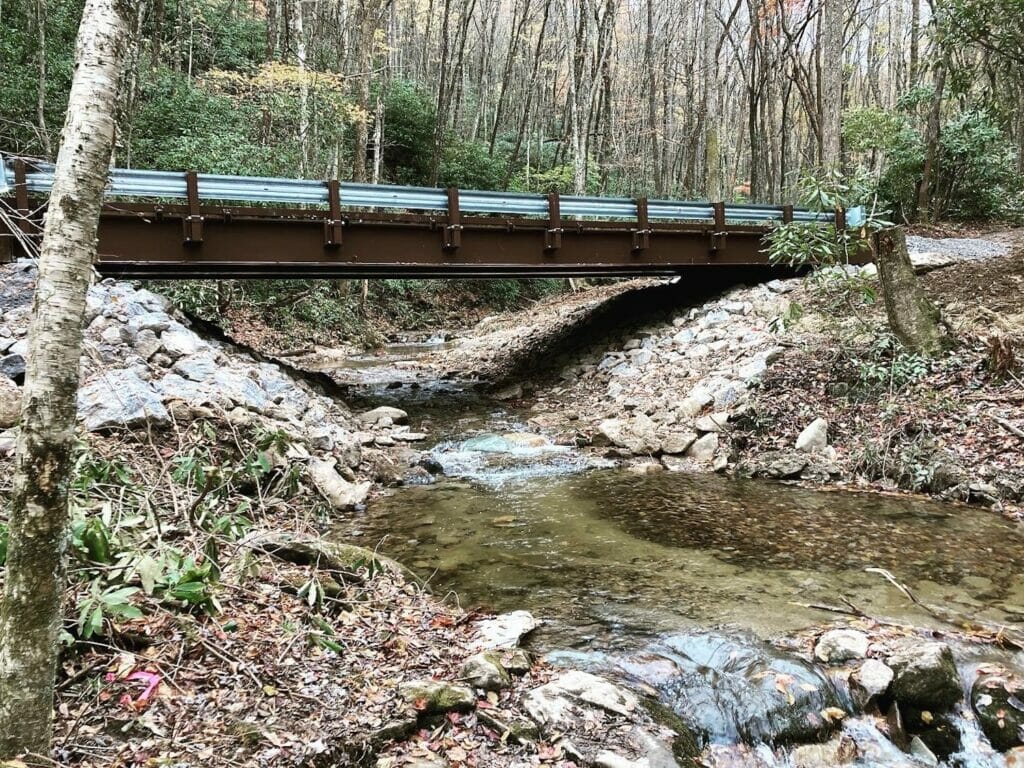
“If that crossing had failed, the community was going to see a large influx of road fill in the stream down there,” Wright said.
A new 50-foot-long bridge now spans the creek at the site and allowed for restoring the stream bed to its natural state.
Wright said that future work could include further additions of woody cover throughout the stretch.
The cost of the project to date is just over $300,000, said Wright, noting that several funding sources were tapped to cover the expense, including Cherokee National Forest, Tennessee Council and Cherokee Chapter of TU, TWRA, Tennessee Wildlife Resources Foundation, Trout & Salmon Foundation and the National Fish and Wildlife Foundation.

While the U.S. Forest Service and the Tennessee Wildlife Resources Commission were critical partners, other participants also helped move the project forward. Those included nearby private landowners who cooperated with access needs, local Trout Unlimited volunteers who monitored stream temperature and additional University of Tennessee students, who helped with habitat surveys.
“It really was a massive project with lots of intertwined partners,” Wright noted.
Wright said that Trail Fork is relatively large by the standards of Appalachian Mountain streams, and the good-and-getting-better habitat will be able to support a robust population of wild brookies.
“In three years,” Wright said. “It has potential to offer one of the best brook trout fishing experiences in the region.”



